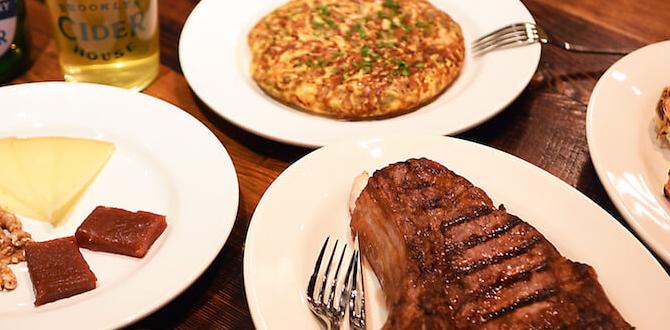Kashmiri Wazwan Feast Srinagar: Your Essential Guide. Experience the rich, aromatic culinary tradition of a Wazwan feast in Srinagar with this beginner-friendly guide. Discover key dishes, traditional preparation, and how to truly savor this authentic Kashmiri experience.
Dreaming of a trip to Srinagar? Perhaps you’ve heard whispers of an incredible feast and are wondering what it’s all about. The “Kashmiri Wazwan feast Srinagar” is not just a meal; it’s a cultural event, a celebration of flavor, and a true taste of Kashmiri hospitality. Many people find understanding the sheer variety and intricate preparation of Wazwan a bit daunting at first. But don’t worry! This guide is here to break it all down in a simple, enjoyable way. We’ll walk you through what makes Wazwan so special, what dishes you absolutely must try, and how to best experience this unforgettable culinary journey. Get ready to explore the heart of Kashmiri cuisine!
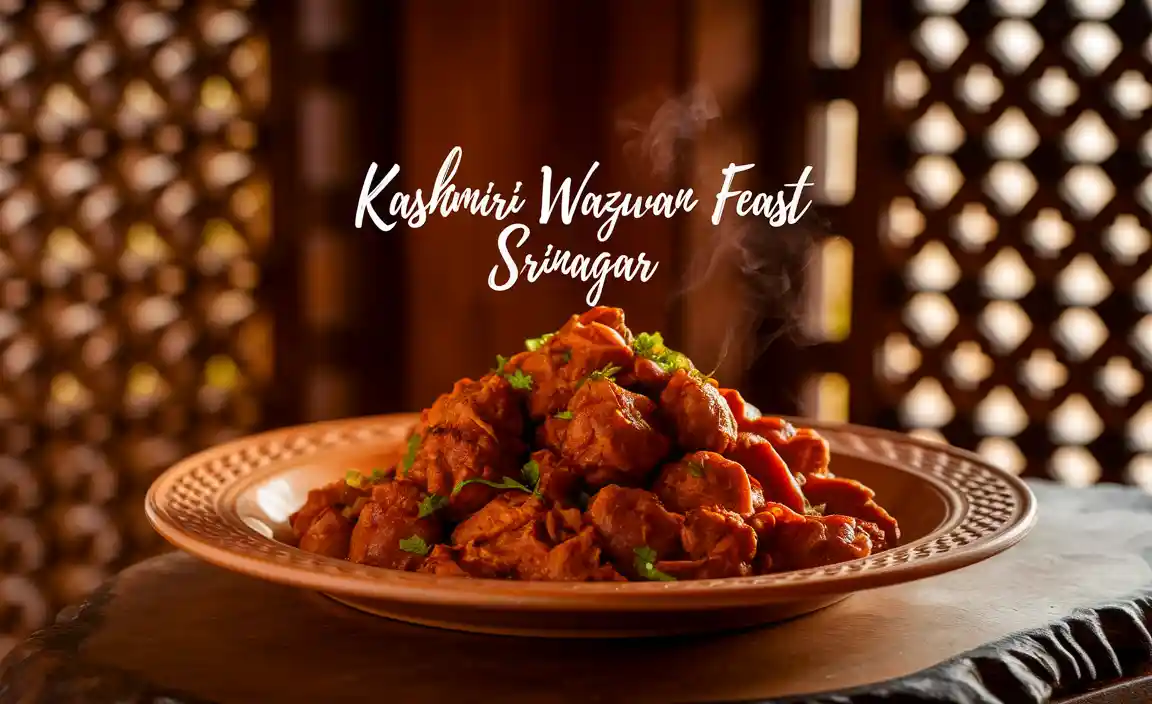
What is Kashmiri Wazwan?
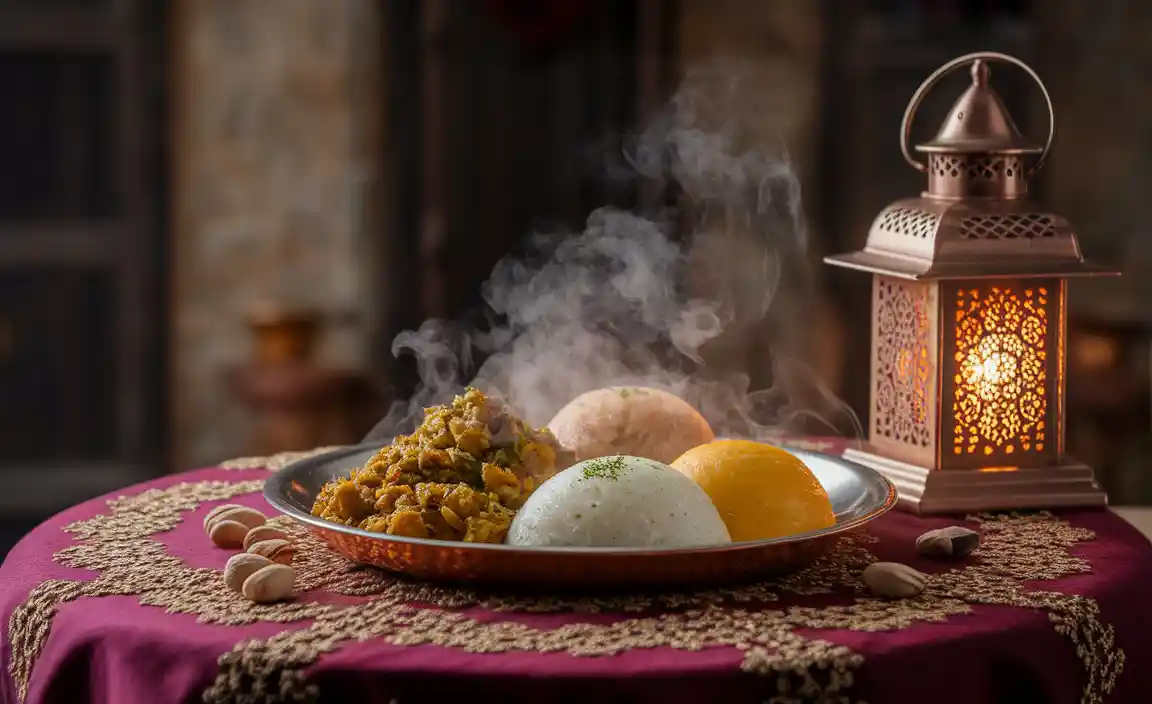
Wazwan is more than just a meal; it’s the pinnacle of Kashmiri Muslim cuisine and a significant cultural symbol. Originating from Kashmir, primarily in and around Srinagar, this elaborate banquet is traditionally prepared by a Waza, a highly skilled chef trained in the intricate art of Wazwan cooking. It’s a formal affair, often hosted for special occasions like weddings, festivals, or important gatherings. The preparation itself is a communal event, involving about 24 different dishes, though a smaller, yet still impressive, selection is common for less formal occasions. The focus is on slow-cooked, deeply spiced, and aromatic meats, alongside a variety of accompaniments.
The essence of Wazwan lies in its complexity, the unique blend of spices, and the specific cooking techniques used. It’s a hands-on experience, meant to be shared and savored communally, often with diners sitting around a large platter called a ‘traami’. The aroma that wafts from a Wazwan kitchen is famously intoxicating, a blend of cardamom, saffron, ginger, garlic, and a host of other warming spices. Understanding Wazwan means appreciating centuries of culinary heritage passed down through generations of Wazas.
The Heart of Wazwan: Key Dishes You Must Try
A true Wazwan feast is an extensive affair, typically comprising multiple courses that showcase the Waza’s skill. While a full 24-dish Wazwan is grand, most celebrations feature a selection of the most popular and iconic dishes. Here are some highlights that form the soul of this Kashmiri culinary masterpiece:
Starters and Soups
The feast usually begins with lighter, palate-awakening dishes. These prepare you for the richness that is to come.
- Rogan Josh: This is perhaps the most famous Wazwan dish. A fragrant curry made with tender lamb or mutton, its vibrant red color comes from dried Kashmiri chilies (which are milder and add color rather than intense heat) and often a touch of alkanet root. It’s slow-cooked to perfection, resulting in melt-in-your-mouth meat swimming in a rich, aromatic gravy.
- Yakhni: A comforting and subtly spiced yogurt-based curry. Lamb or chicken pieces are simmered in a broth of yogurt, fennel seeds, dried ginger powder (sonth), and sometimes cardamom. It’s a lighter contrast to the richer meat dishes.
- Mirchi Korma: While the name might suggest spicy chilies, this Korma is more about the creamy, rich gravy made with yogurt, nuts (like almonds or cashews), and mild spices, often with finely chopped green chilies for a hint of warmth rather than intense fire.
Main Meat Courses
This is where the Wazwan truly shines, with elaborate preparations of lamb and chicken.
- Phish Tuver: A delightful dish featuring tender lamb ribs, slow-cooked until falling off the bone. The name hints at the traditional cooking vessel, but the result is incredibly succulent meat.
- Rista: Small, soft meatballs made from minced lamb, seasoned and cooked in a savory, often reddish gravy, sometimes with saffron and fennel. These are incredibly tender and flavorful.
- Gushtaba: Often considered the grand finale of the meat courses. These are larger, smooth, pale gray meatballs made from minced lamb, pounded until exceptionally tender. They are poached in a rich, creamy yogurt gravy, often flavored with cardamom and dried ginger. Gushtaba is known for its creamy texture and melt-in-your-mouth quality.
- Seekh Kebabs: Skewers of finely minced lamb, seasoned with aromatic spices and grilled or pan-fried until slightly charred and juicy.
- Tabak Maaz: Braised lamb ribs cooked until incredibly tender, then often shallow-fried until crispy on the outside. The contrast in texture and the rich, spiced flavor make this a standout dish.
Accompaniments
These elements balance the richness of the meat courses and complete the meal.
- Kashmiri Pulao: Fragrant basmati rice, often flavored with saffron, cardamom, and sometimes garnished with dried fruits and nuts like almonds and cashews.
- Dooni Roti: A special kind of leavened bread that is baked twice, making it crisp yet chewy.
- Curd (Dahi): Fresh, plain yogurt is essential to balance the richness of the curries.
- Salads and Chutneys: Fresh, crisp salads and spicy chutneys provide a refreshing counterpoint.
The Art of Preparation: A Glimpse into the Waza’s Kitchen
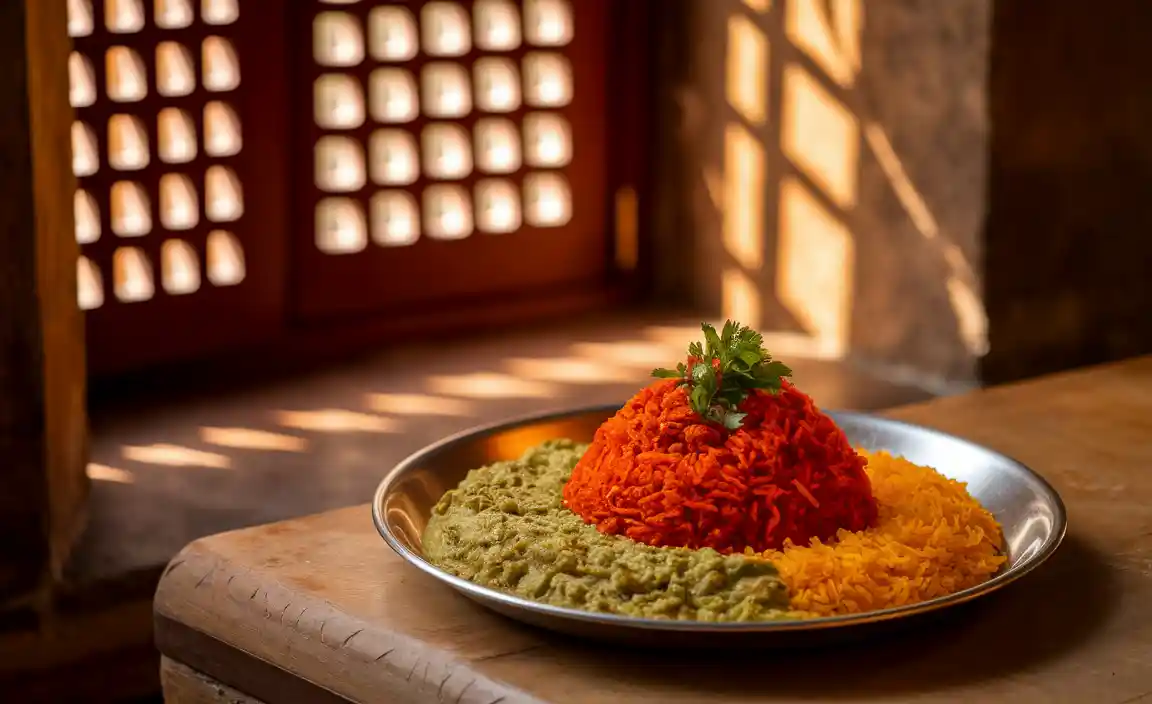
The preparation of a Wazwan feast is a meticulous and time-honored tradition, a testament to the skill of the Wazas. This isn’t something you whip up in an hour on a Tuesday evening; it’s a culinary event that requires planning, dedication, and specific techniques. Understanding this process highlights the value and artistry behind each dish.
Spices: The Soul of Wazwan
Kashmiri cuisine, and Wazwan in particular, relies on a unique blend of spices. While chilies add color, the depth of flavor comes from a symphony of others:
- Fennel Seeds (Saunf): These add a subtle anise-like sweetness and aroma, particularly prominent in dishes like Yakhni and Gushtaba.
- Dried Ginger Powder (Sonth): A staple in Kashmiri cooking, adding a warm, pungent kick that is different from fresh ginger.
- Cardamom (Elaichi): Both green and black cardamom are used, lending their distinctive floral and smoky notes.
- Cinnamon (Dalchini): Adds warmth and sweetness.
- Cloves (Laung): For a potent, aromatic punch.
- Saffron (Kesar): The iconic spice of Kashmir, used generously for its distinct flavor, aroma, and golden hue.
- Asafoetida (Hing): Used judiciously, it adds a pungent, savory depth.
The Wazas often have their own secret spice blends, passed down through families, making each Wazwan unique.
Cooking Techniques
Slow cooking is the cornerstone of Wazwan. Many dishes are simmered for hours over low heat, allowing the flavors to meld and the meats to become incredibly tender. Traditional copper pots (like the deg) are often used, which help in even heat distribution and impart a subtle flavor. The process of pounding meat for dishes like Gushtaba is crucial for achieving their characteristic silken texture. The preparation is an art form, transforming simple ingredients into culinary masterpieces through patience and skill.
Experiencing Wazwan in Srinagar
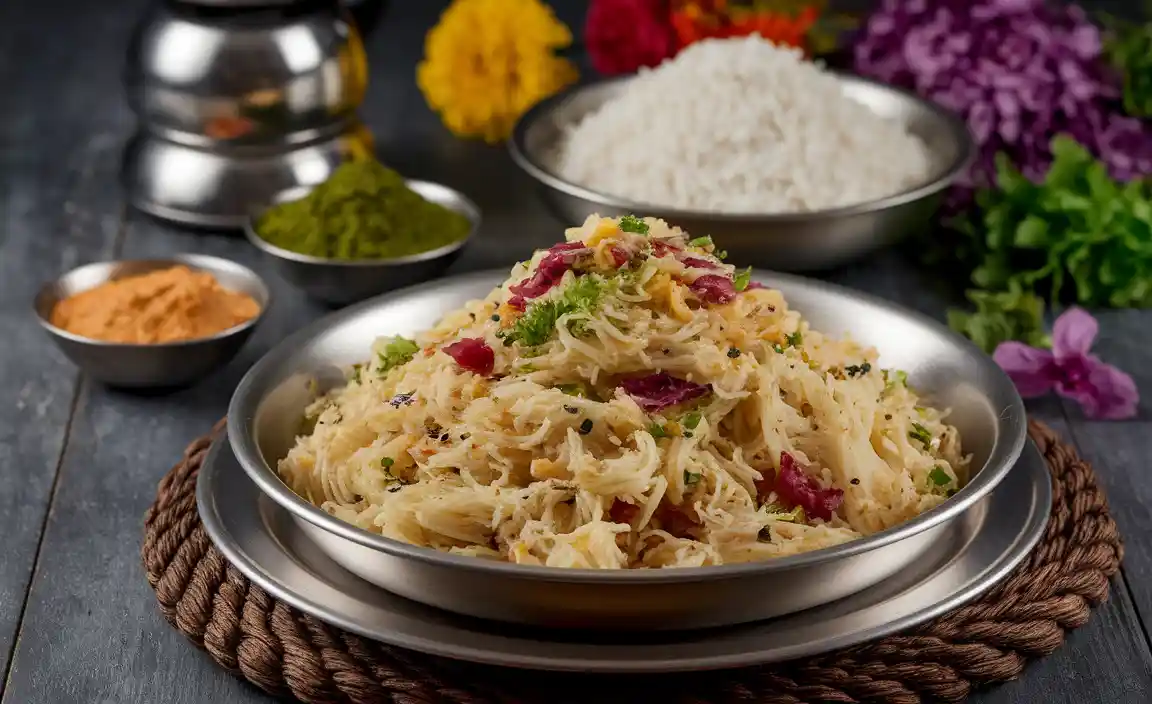
Visiting Srinagar offers the perfect opportunity to immerse yourself in the authentic Wazwan experience. It’s not just about eating; it’s about understanding the culture and the hospitality that comes with it.
Where to Find Authentic Wazwan
The best place to experience a true Wazwan feast is in Srinagar itself. Here are a few ways to enjoy it:
- Houseboat Stays: Many houseboat owners on Dal Lake and Nigeen Lake offer traditional Kashmiri meals, including Wazwan, prepared by local chefs. This is a fantastic way to experience it in a uniquely Kashmiri setting.
- Specialty Restaurants: Several restaurants in Srinagar specialize in Wazwan. Look for establishments that are known for their authenticity and traditional preparation methods. Do a bit of research on local food blogs or ask your hotel for recommendations.
- Local Gatherings: If you have the chance to be invited to a local wedding or a significant family gathering, you will undoubtedly experience the most authentic and elaborate Wazwan. This is the truest form of the feast.
- Waza Communities: In some areas, you can find communities or specific households where Wazas continue their ancestral craft. Arranging a meal through a local contact or hotel can sometimes lead to these highly authentic experiences.
Etiquette and How to Enjoy
Wazwan is a communal dining experience, and understanding the traditional etiquette enhances the enjoyment.
- Communal Eating: Wazwan is traditionally eaten from a large, single platter called a ‘traami’, shared by 2-4 people. Diners sit around the traami, and food is served directly onto it.
- Eating with Hands: Traditionally, Wazwan is eaten with the right hand. The Waza will often wash your hands before and after the meal.
- Order of Eating: Diners typically start with the milder dishes and move towards the richer, spicier ones.
- Respecting the Food: Avoid wasting food. The feast is generous, and the Wazas take pride in their preparations. Take only what you can eat.
- Savoring Each Dish: Each dish is a work of art. Take your time to appreciate the complex flavors, aromas, and textures.
- The Role of Yogurt: Plain curd (dahi) is an essential part of the meal, used to cleanse the palate and balance the richness, especially after the spicier dishes.
Embracing these traditions will allow you to connect more deeply with the culture and the culinary heritage of Kashmir.
Planning Your Wazwan Experience
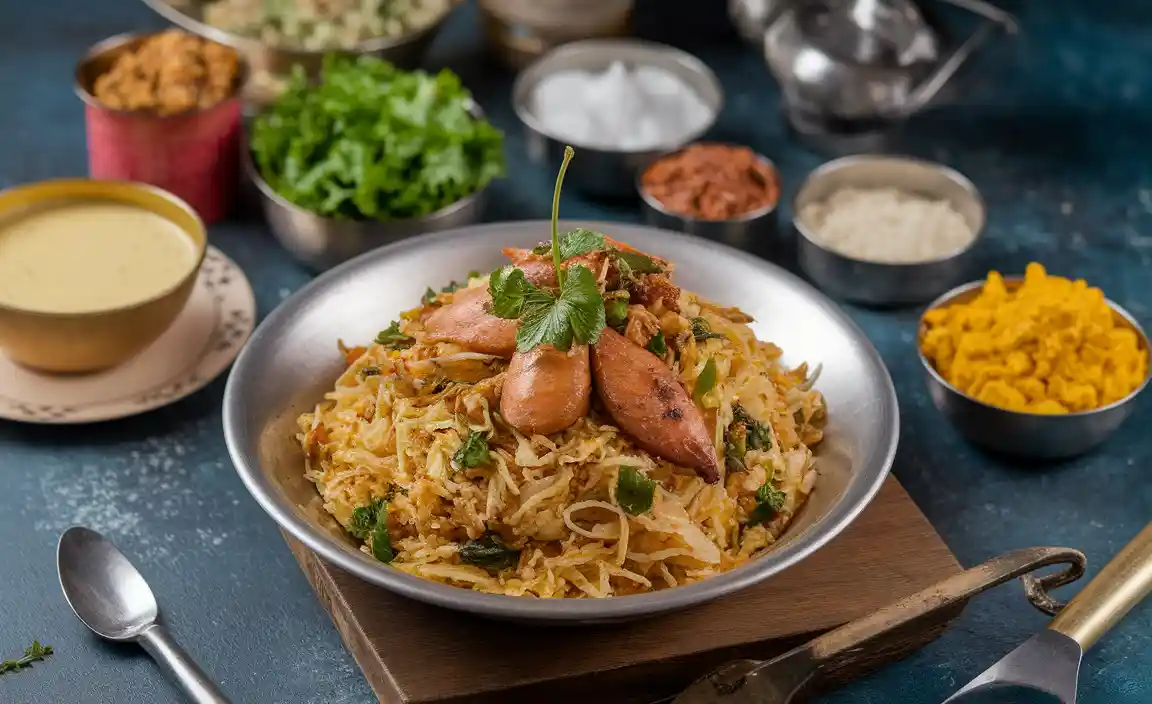
To make the most of your Wazwan feast, some planning can go a long way. Whether you’re visiting Srinagar or trying to recreate elements at home, understanding the scope is key.
When to Have Wazwan
While it can be enjoyed year-round, Wazwan is particularly popular during festive seasons and celebrations. Many tourists opt to sample it during their visit to Srinagar to get a true taste of local culture. If you’re planning a trip to Kashmir, consider timing your visit around local festivals for a more immersive experience.
Budget Considerations
A full, authentic Wazwan feast prepared by a professional Waza can be a significant expense due to the quality of ingredients, extensive labor, and multiple rich dishes. Prices can vary widely depending on the number of dishes, the restaurant or caterer, and the location. For a truly elaborate experience, expect it to be a special occasion treat. However, many establishments offer smaller, more affordable Wazwan platters that still give you a fantastic taste of the cuisine.
Dietary Considerations
Traditional Wazwan heavily features lamb and mutton. While some dishes might use chicken, vegetarian options are generally not a core part of its traditional structure. If you have dietary restrictions:
- Vegetarian/Vegan: It will be challenging to find a traditional Wazwan that caters to strict vegetarian or vegan diets, as it’s meat-centric. However, some places might offer a few vegetable-based Kashmiri dishes on the side if requested in advance. It’s best to communicate your needs well ahead of time.
- Halal: Wazwan is prepared according to Islamic dietary laws, so all meat is Halal.
Always inform your host or the restaurant about any dietary restrictions or allergies when booking or ordering.
Wazwan vs. Other Indian Cuisines: What’s Different?
Kashmiri Wazwan stands out distinctly from other Indian cuisines. While Indian food is diverse, Wazwan has its own unique identity shaped by geography, climate, and cultural influences unique to the Kashmir region. The isolation of the valley historically led to distinct culinary practices.
Here’s how it differs:
- Spice Usage: While many Indian cuisines are known for sharp, fiery spice, Wazwan relies more on aromatic spices like cardamom, fennel, and dried ginger for deep, warm flavors. Kashmiri chilies are used for color more than heat, a stark contrast to the chili-forward dishes found in South India or Punjabi cuisine.
- Cooking Methods: Slow cooking and braising are paramount in Wazwan, leading to incredibly tender meats. This differs from the stir-frying or quick curries that are common in other regions.
- Dairy Integration: Yogurt and milk are used extensively in Wazwan gravies (like Yakhni and Gushtaba), creating rich, creamy textures. While dairy is used across India, its specific application in Wazwan gravies is characteristic.
- Absence of Tomatoes and Onions in Some Dishes: Unlike many North Indian curries that form a base of onion-tomato, some classic Wazwan dishes like Yakhni and Gushtaba rely on yogurt and aromatic spices for their base, creating a lighter, albeit rich, flavor profile. However, dishes like Rogan Josh do incorporate onions and garlic.
- Presentation: The communal ‘traami’ serving style is a hallmark of Wazwan, emphasizing shared dining.
Understanding these differences helps appreciate the distinct culinary heritage of Kashmir. For more on rich Indian culinary traditions, explore resources like Incredible India, the official tourism website, which offers insights into diverse regional cuisines.
Trying Wazwan at Home: A Simplified Approach
Recreating a full 24-dish Wazwan at home is an enormous undertaking! However, you can definitely bring the flavors of Wazwan into your kitchen with a simplified approach. Focus on a few key dishes to master.
Tips for Home Cooks
- Start with Rogan Josh: This is a good starting point as recipes are widely available and it’s incredibly rewarding. Focus on getting good quality lamb and slow-cooking it.
- Master Yakhni or Gushtaba: These yogurt-based dishes showcase the unique dairy integration in Wazwan and can be made with less complex preparations at home.
- Focus on Spice Blends: Invest in whole spices and grind them fresh. This makes a huge difference! You can create your own approximation of a Kashmiri spice mix.
- Patience is Key: Wazwan is about slow cooking. Don’t rush the process if you want the authentic tender texture.
Essential Spices to Stock
For a taste of Wazwan at home, make sure your pantry includes:
- Whole Fennel Seeds
- Dried Ginger Powder (Sonth)
- Green Cardamom Pods
- Black Cardamom Pods
- Cinnamon Sticks
- Cloves
- Kashmiri Red Chili Powder (for color, if available)
- Asafoetida (Hing)
And of course, high-quality saffron for that authentic aroma and color.
FAQ: Your Kashmiri Wazwan Questions Answered
Q1: What is the most important dish in a Wazwan feast?
A1: While it’s hard to pick just one, Gushtaba is often considered the ceremonial end to the meat courses, and Rogan Josh is globally recognized as a quintessential Wazwan dish.
Q2: Can I have Wazwan if I’m vegetarian?
A2: Traditional Wazwan is meat-heavy. While some Kashmiri restaurants might offer vegetarian dishes, a true Wazwan experience will be difficult to find without meat.
Q3: How much does a Wazwan feast cost?
A3: The cost varies greatly. A full, elaborate Wazwan prepared by a professional can be quite expensive, but smaller platters or meals at local eateries are more budget-friendly.
Q4: Is Wazwan always spicy?
A4: Wazwan uses Kashmiri chilies primarily for color, not intense heat. While fragrant and flavorful, it is generally not as spicier than some other Indian cuisines. The overall taste is rich and aromatic.
Q5: How many people does a Wazwan serve?
A5: A traditional Wazwan feast is meant for a gathering. Dishes are served communally from a large platter (traami) that usually serves 2 to 4 people, and there are many such dishes for a larger group.
Q6: What is “Waza”?
A6: A “Waza” is a traditional Kashmiri chef who specializes in preparing the intricate Wazwan feast. They are highly skilled and their expertise is passed down through generations.
Conclusion
Embarking on the culinary journey of a Kashmiri Wazwan feast in Srinagar is an experience that engages all your senses. From the moment the aromatic steam rises from the platter to the last lingering taste of saffron and spices, it’s a celebration

